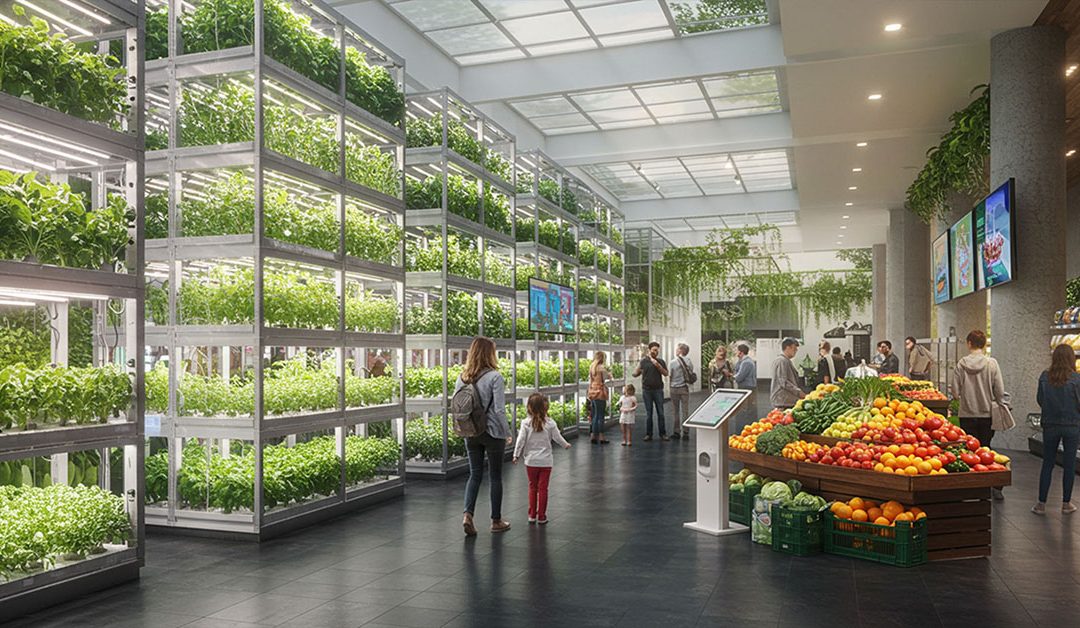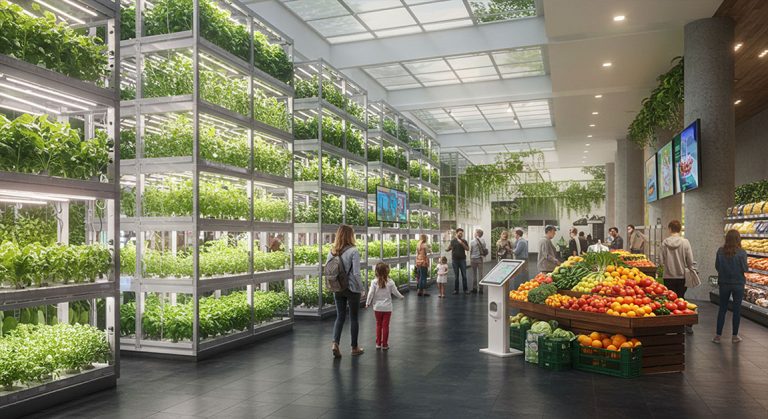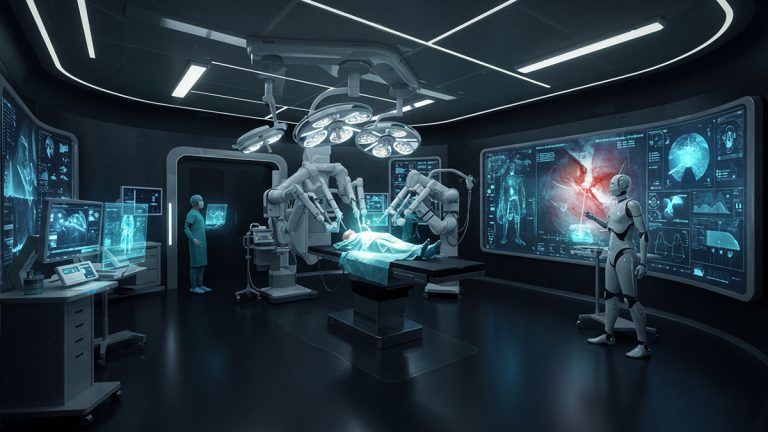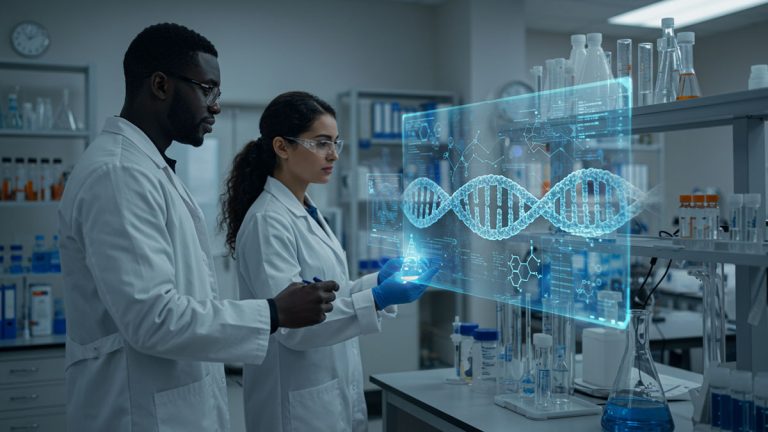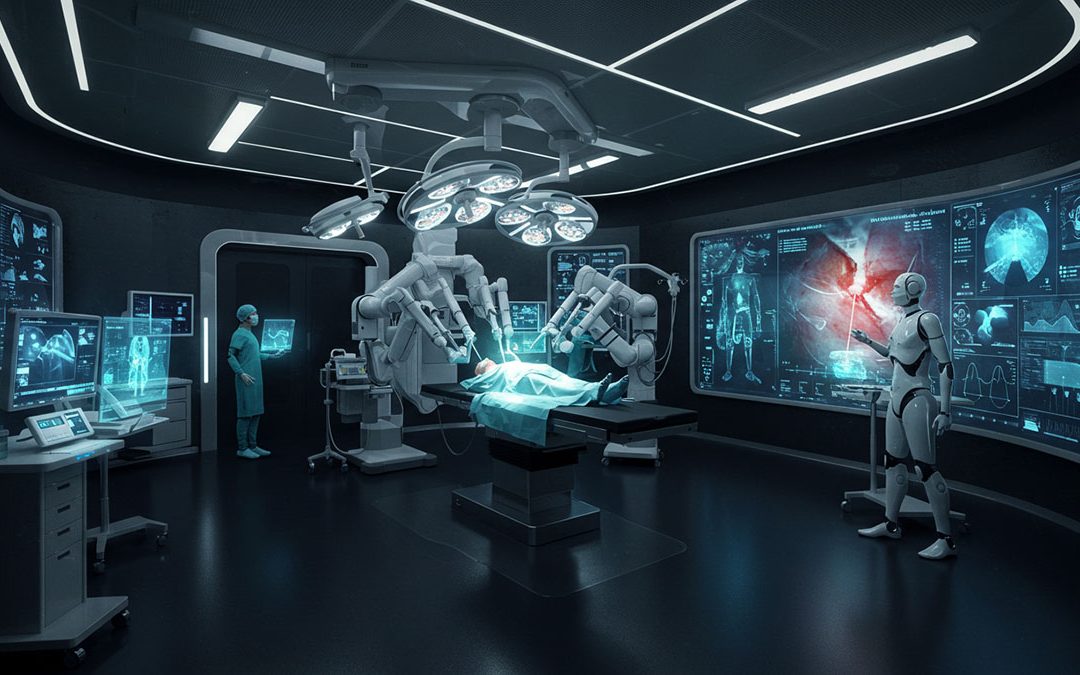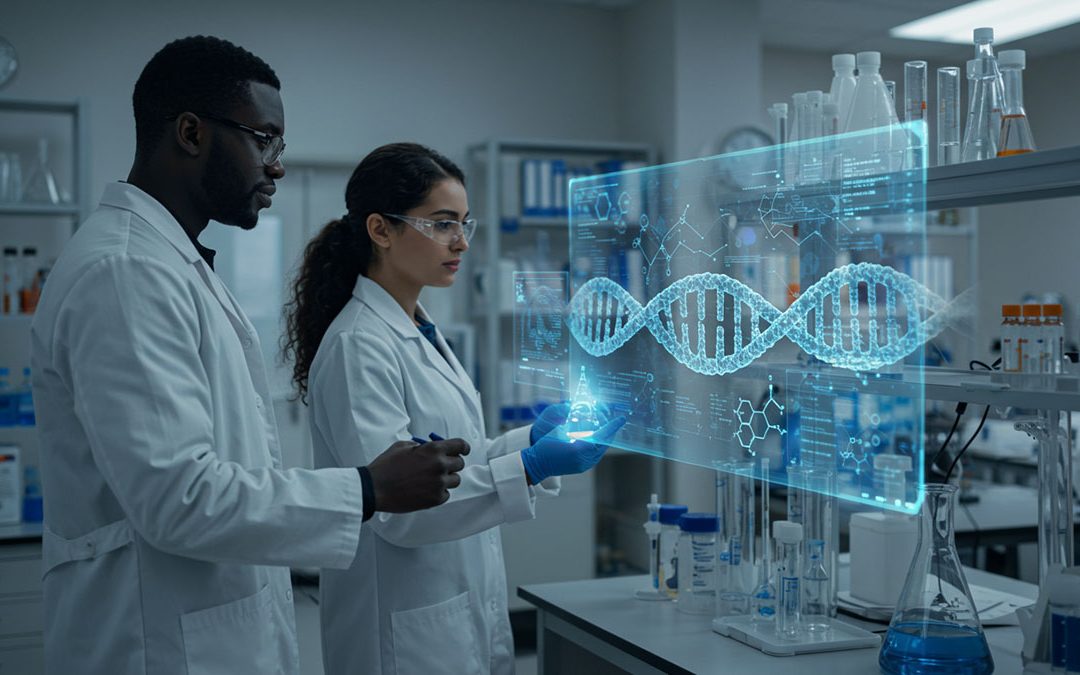How AI Replacing Human Jobs Is Changing the Workforce
AI replacing human jobs is a growing concern as technology rapidly evolves. The impact of AI on jobs spans across industries, from manufacturing to customer service. While automation improves efficiency, it raises critical questions about how people can adapt to this changing landscape. For centuries, human labor has been the backbone of human progress—building industries, fueling economies, and shaping thriving societies. Jobs have not only provided livelihoods; they’ve offered people purpose, identity, and a sense of belonging. Across generations, work has been central to how individuals contribute to their communities and how societies function. But with the rapid rise of Artificial Intelligence, that balance is shifting faster than ever. Technologies that once seemed like distant possibilities are now integrated into everyday life, transforming industries and challenging the foundation of how people work. AI systems can now analyze complex data, recognize speech, drive vehicles, and even produce creative works, sparking an urgent conversation: What happens if AI replaces human jobs? More importantly, how can individuals, communities, and policymakers adapt to these changes to ensure that society thrives rather than falters? The acceleration of AI development has left many questioning whether humanity is prepared for the consequences. On one hand, it offers unprecedented efficiency and the potential to eliminate repetitive and dangerous tasks. On the other, it raises fears of mass unemployment and deepening economic inequality. While technological revolutions are not new—history has seen similar shifts during the Industrial Revolution and the advent of computers—the scale and speed of AI’s impact are unparalleled. This shift presents both a challenge and an opportunity. Understanding the risks, benefits, and ways to adapt will be crucial in navigating this new era of work, ensuring that the future is shaped not just by technology, but by the collective choices of humanity.
Jobs Most at Risk of AI and Job Displacement
Artificial Intelligence is transforming industries across the globe, reshaping the workforce in ways that were unimaginable a decade ago. While it introduces groundbreaking efficiency, it also raises significant concerns about widespread job displacement. According to the World Economic Forum, around 85 million jobs could be displaced globally by 2025, even as 97 million new roles emerge. This duality presents a crucial question: Can workers adapt quickly enough to keep pace with AI’s evolution?
Industries Most at Risk:
The impact of AI on jobs is most evident in industries like transportation, retail, and manufacturing. As artificial intelligence replaces human jobs in these sectors, millions face potential displacement. However, certain jobs AI can’t replace, such as those requiring creativity and emotional intelligence, remain secure.
- Manufacturing: Automated assembly lines and AI-powered robotics handle repetitive tasks like welding, packing, and quality control, displacing traditional factory jobs.
- Retail & Customer Service: AI-driven chatbots and self-checkout systems manage customer inquiries and transactions, reducing frontline retail positions.
- Transportation: Autonomous vehicles threaten the livelihoods of taxi drivers, truckers, and delivery personnel as companies invest in driverless technology.
- Healthcare Diagnostics: AI systems can analyze medical images faster than human professionals, potentially reducing roles for radiologists and diagnostic technicians.
- Finance & Legal Services: AI algorithms now perform data entry, fraud detection, and contract analysis, automating jobs once held by clerks, paralegals, and analysts.
Broader Implications of AI:
- Disproportionate Impact on Vulnerable Communities: Lower-income workers and those with less education are most at risk, potentially exacerbating socioeconomic divides.
- Regional Economic Decline: Areas dependent on industries vulnerable to automation (like manufacturing towns) may experience increased unemployment and declining local economies.
- Reduced Job Stability: As companies prioritize automation to cut costs, even traditionally secure roles face uncertainty.
Why This Matters:
Job displacement isn’t just an economic issue—it affects mental health, community stability, and personal identity. Without intervention, AI’s rapid integration could destabilize entire regions, deepening inequalities and leaving millions struggling to adapt.
The Risks of Not Adapting to AI
Failing to adapt to the rise of Artificial Intelligence could lead to widespread economic, social, and psychological challenges. While technological advancements have historically created new opportunities, the unprecedented speed and scope of AI adoption heighten the risks of inaction. As AI continues to permeate industries, individuals and communities that fail to evolve may face severe consequences that extend far beyond lost wages.
Key Risks of Ignoring AI’s Impact:
- Widening Economic Inequality: Without intervention, Artificial Intelligence adoption could concentrate wealth among tech companies and highly skilled workers while marginalizing those without access to reskilling programs.
- Mass Unemployment: Industries that rely on repetitive or predictable tasks are already experiencing job losses. Failure to transition workers into new roles could lead to long-term unemployment.
- Community Decline: When local industries automate, entire communities may suffer. Shuttered businesses, declining property values, and reduced tax bases can lead to diminished public services like education and healthcare.
- Mental Health Consequences: Job loss is strongly correlated with increased stress, anxiety, and depression. Individuals who derive identity and purpose from their work may struggle to adjust.
- Civil Unrest and Political Instability: Economic hardship and growing inequality can fuel frustration, leading to protests, strikes, and, in extreme cases, radical political shifts.
Case in Point:
A 2023 study from the International Labour Organization (ILO) reported that regions with high automation rates witnessed a 25% increase in unemployment and 15% rise in poverty levels over five years. Without proactive measures, these trends could accelerate.
Why Immediate Action Matters:
- Delayed responses worsen recovery time—it’s easier to prepare now than to fix damage later.
- Communities that invest in reskilling and economic diversification are more resilient to automation-driven disruptions.
- Public awareness and government intervention can mitigate the worst outcomes, but they require widespread support and early planning.
How AI Can Improve Work and Society
Despite the potential risks, AI also presents significant opportunities to enhance human life and transform how society functions. When implemented thoughtfully, Artificial Intelligence can reduce burdensome tasks, improve accessibility to essential services, and even enhance overall well-being.
Positive Outcomes of AI Integration:
- Upskilling and Reskilling Initiatives: AI-powered learning platforms can provide personalized education tailored to individual learning styles and pace. Platforms like Coursera and edX offer AI-related courses that help workers pivot into emerging industries.
- Improved Work-Life Balance: Automation can relieve humans from repetitive tasks, allowing for shorter workweeks. Countries experimenting with 4-day workweeks report increased productivity and employee satisfaction.
- Creation of New Job Categories: New roles such as AI ethicists, human-AI interaction designers, and data annotators are emerging, offering fresh career paths.
- Enhanced Community Engagement: With mundane tasks automated, people can invest time in local community activities, creative endeavors, and family connections.
- Greater Access to Healthcare and Education: AI systems can bring telemedicine to remote areas and provide virtual tutors for underserved students, helping bridge global disparities.
Real-World Success Stories with AI:
- Japan’s Use of Care Robots: With an aging population, Japan has integrated AI-driven care robots to assist the elderly, improving both safety and quality of life.
- AI in Agriculture: Farmers in the Netherlands use Artificial Intelligence to monitor crop health, reducing food waste by up to 30% and increasing efficiency.
- AI-Powered Accessibility Tools: Applications like Google’s Live Transcribe help individuals with hearing impairments engage in conversations more seamlessly.
Why This Matters:
Embracing Artificial Intelligence doesn’t mean eliminating jobs—it’s about transforming the nature of work to be more fulfilling and sustainable. While AI replaces certain roles, it enhances others, allowing humans to focus on tasks requiring empathy, creativity, and innovation.
How to Thrive Amid the Impact of AI on Jobs
While AI’s advancement is inevitable, how individuals, businesses, and communities respond to this technological shift will determine whether it becomes a source of progress or disruption. Proactive adaptation is key—those who invest in continuous learning and skill development will be better positioned to thrive in an AI-driven future.
Practical Steps to Stay Ahead
- Learn to Work with AI: Understanding how Artificial Intelligence tools function is critical. Platforms like Coursera, edX, and LinkedIn Learning offer accessible courses on AI basics, machine learning, and automation. Even industries traditionally seen as “non-technical”—like marketing, education, or healthcare—now incorporate AI technologies. By familiarizing yourself with relevant tools, you can become more adaptable in your career.
- Focus on Human-Exclusive Skills: AI excels at data processing and repetitive tasks but struggles with creativity, empathy, and complex decision-making. Develop soft skills such as leadership, emotional intelligence, and communication, which are essential in team environments and customer relations. Creative fields like design, strategy, and innovation will also remain uniquely human domains.
- Invest in Lifelong Learning: In an evolving job market, stagnation can be risky. Set personal goals to regularly update your knowledge. This could include participating in webinars, attending workshops, or joining professional networks that focus on emerging technologies.
- Support Ethical and Transparent AI Development: Consumers have power. Support companies that prioritize responsible AI practices, are transparent about their use of technology, and are committed to benefiting society. Open-source AI initiatives often aim to make technology accessible and fair, so engaging with or supporting these projects can contribute to more equitable innovation.
- Push for Policy Changes and Community Resilience: Stay informed about local and national regulations. Advocate for policies that promote reskilling programs, worker protections, and ethical use. Community-driven efforts, such as local coding boot camps or Artificial Intelligence literacy initiatives, help ensure that technological benefits are widely shared.
Real-World Examples of AI:
- Finland’s National AI Education Initiative: To prepare its citizens for the digital future, Finland launched the “Elements of AI” course, which has been completed by over 1% of the population. This initiative demonstrates how accessible education can empower a nation to embrace technological change.
- Corporate Reskilling Programs: Companies like Amazon have invested billions into retraining their workforce, preparing employees for roles in data analysis, cloud computing, and other emerging fields.
Why This Matters:
The future of work isn’t just about technological advancements—it’s about how we adapt to them. Ignoring the shift could lead to job loss, widening inequality, and social unrest. However, those who take initiative—by learning, advocating, and supporting ethical innovations—can help shape a future where AI complements human potential rather than replaces it.
The Role of Communities and Policymakers in Shaping AI’s Impact
Adapting to the rise of AI isn’t solely an individual responsibility—governments, communities, and corporations must play pivotal roles in ensuring a fair transition. Without coordinated efforts, the benefits of AI could be concentrated among a privileged few, while the majority face economic uncertainty and diminished opportunities.
How Policymakers Can Help:
- Develop Comprehensive AI Regulations: Governments should implement clear guidelines addressing data privacy, algorithmic transparency, and accountability. Regulations must ensure Artificial Intelligence systems are fair, unbiased, and used ethically, especially in sensitive areas like healthcare, finance, and criminal justice.
- Invest in Reskilling and Education: Policymakers should allocate resources to reskilling programs that help workers adapt to AI-driven industries. Initiatives could include free coding classes, digital literacy programs, and partnerships with private companies to provide hands-on training.
- Support Small and Medium Enterprises (SMEs): While large corporations often lead AI development, SMEs risk being left behind. Grants and tax incentives can encourage smaller businesses to adopt AI in ways that improve productivity without displacing workers.
- Promote Open AI Research: To avoid monopolies, governments should fund open-source AI initiatives that prioritize public benefit over profit. Encouraging transparency prevents a few powerful entities from controlling the technology.
- Strengthen Social Safety Nets: For those temporarily displaced by automation, enhanced unemployment benefits, job placement services, and mental health support are essential to maintain societal stability.
The Community’s Role:
- Grassroots Movements for Ethical AI: Local communities can advocate for responsible AI use by organizing workshops, awareness campaigns, and public forums. Citizen involvement ensures that community needs and ethical considerations are prioritized.
- Public-Private Partnerships: Collaborations between governments, nonprofits, and corporations can create community-based solutions to address job displacement. Examples include tech hubs in underserved areas or mobile AI education units.
- Encouraging Youth Involvement: Schools and community centers can offer early exposure to STEM and AI literacy, ensuring future generations are prepared for the evolving job landscape.
Real-World Examples of AI:
- European Union’s AI Act: The EU is leading in creating comprehensive regulations that govern transparency, data use, and safety measures to prevent discriminatory algorithms.
- Singapore’s SkillsFuture Program: A nationwide initiative offering subsidies and courses to help workers reskill in areas like AI, cybersecurity, and data analysis.
- Local AI Advocacy Groups: Organizations like the Partnership on AI and AI Now Institute bring together various stakeholders to push for equitable AI development.
Why Community and AI Policy Action Matters:
Without intervention, the risks of increased inequality, job loss, and exploitation grow significantly. However, proactive community involvement and robust policymaking can ensure that the rise of Artificial Intelligence enhances rather than harms society. A collaborative approach offers the best path toward an equitable future, where technological advancements uplift everyone—not just a select few.
Real-World Examples: Where AI Is Already Making an Impact
Understanding how Artificial Intelligence is currently reshaping industries offers valuable insights into potential future trends and challenges. These examples illustrate both the benefits and risks of AI integration in the workforce.
Retail and Customer Service:
- Amazon’s Automated Warehouses: Amazon’s fulfillment centers are increasingly reliant on robotics to sort, pack, and transport goods. While this has improved efficiency and delivery times, it has also displaced thousands of warehouse workers.
- Self-Checkout Kiosks: Major retailers like Walmart and Tesco have introduced automated checkout systems. While convenient, they reduce the need for cashier positions, raising concerns about widespread job loss in retail.
Transportation and Logistics:
- Autonomous Delivery Vehicles: Companies like FedEx and Starship Technologies are testing self-driving delivery robots, which could eventually replace human couriers.
- Driverless Trucks: Startups like TuSimple and established players like Tesla are developing autonomous trucks. Although these innovations promise cost savings, they threaten millions of jobs in freight transportation.
Healthcare Innovations:
- AI Diagnostics: Systems like IBM’s Watson Health can analyze medical images faster than human radiologists, leading to quicker diagnoses. However, over-reliance on AI may raise issues regarding accuracy and patient trust.
- Robotic Surgery Assistants: Tools like the Da Vinci Surgical System enable more precise procedures but could marginalize some medical staff roles.
Manufacturing Automation:
- Foxconn’s Robotics Deployment: This electronics manufacturer, which supplies companies like Apple, has replaced thousands of assembly-line workers with automated systems to increase production efficiency.
- 3D Printing in Production: AI-driven 3D printers are revolutionizing how products are manufactured, reducing the need for traditional factory workers.
Education and Knowledge Work:
- AI Tutors: Platforms like Socratic by Google and Duolingo are transforming how students learn. While these tools increase access to education, they could lessen the demand for some teaching roles.
- Automated Content Generation: AI systems like ChatGPT and Jasper are being used in journalism and marketing, raising concerns about the future of human writers and editors.
Positive and Balanced Implementations:
- Siemens: In its factories, Siemens uses AI to support workers rather than replace them. Robots handle hazardous tasks while humans oversee operations, demonstrating a balanced approach.
- Finland’s Elements of AI Initiative: To combat fears around automation, Finland launched a free online course to educate its citizens about Artificial Intelligence, with over 1% of the population participating.
Why These Examples Matter:
These real-world scenarios highlight how AI’s impact on jobs is complex and multifaceted. While automation can boost efficiency and reduce costs, it also poses significant challenges for workers. Industries that fail to plan for human displacement risk societal backlash, increased unemployment, and widening inequality. Conversely, companies that adopt a human-centric approach can enhance productivity without sacrificing livelihoods.
Can AI and Humans Work Together?
Artificial Intelligence is transforming the workforce at a pace unlike any technological shift in history. As AI automates routine tasks and introduces advanced capabilities across industries, it presents both unprecedented opportunities and significant risks. The future of work will be shaped not just by technological advancements but by how we, as a society, respond to them.
Balancing Innovation and Human Values
If we embrace AI without proper foresight, we risk widespread unemployment, increased economic inequality, and weakened community structures. Yet, with careful planning and ethical considerations, It can be harnessed to enhance human potential rather than replace it. The key lies in adopting a balanced approach that prioritizes both technological progress and human well-being.
Actionable Steps Moving Forward:
- Stay Informed and Proactive: Understanding implications helps individuals and communities prepare for changes in the job market.
- Support Ethical Development: Advocate for transparent policies and back companies that prioritize fairness and inclusivity.
- Invest in Lifelong Learning: Continually upgrading skills, especially in creativity, leadership, and emotional intelligence, will keep workers adaptable.
- Foster Human-AI Collaboration: Encourage solutions where AI enhances human work rather than replaces it, creating more sustainable and meaningful roles.
A Shared Responsibility
Governments, corporations, educators, and individuals all have roles to play in shaping an AI-driven future that benefits everyone. Policymakers must implement safeguards, businesses should embrace responsible AI practices, and individuals need to focus on developing irreplaceable human skills.
Final Thought:
The question isn’t just “What happens if AI replaces human jobs?”—it’s “How do we ensure that technology serves humanity, not the other way around?”AI replacing human jobs presents both challenges and opportunities. By understanding the impact of AI on jobs and focusing on jobs AI can’t replace, individuals and organizations can adapt to the future of work with AI. Learn more about how the Purpose for Humans Could Change With AI Replacing Employment Learn how AI impacts not only employment but also global resource management here
Sources:
- World Economic Forum. (2020). Recession and automation changes our future of work—but there are jobs coming. Retrieved fromVisit External Link
- International Labour Organization. (2023). World employment and social outlook trends 2023. Retrieved fromVisit External Link
- Organisation for Economic Co-operation and Development. (2023). AI in the workplace. Retrieved fromVisit External Link
- Coursera. (2023). WEF future of jobs report 2025. Retrieved fromVisit External Link
- Inman, P. (2023, November 16). AI is coming for our jobs: Could universal basic income be the solution? The Guardian. Retrieved fromVisit External Link
- Reuters. (2024, July 31). AI could eliminate up to 5% of jobs in Latin America, study finds. Retrieved fromVisit External Link
- Society for Human Resource Management. (2023). Why robots won’t steal your job. Retrieved fromVisit External Link
- World Economic Forum. (2022, May). 3 “jobs of the future” that are already here. Retrieved fromVisit External Link
- International Labour Organization. (n.d.). The future of work initiative. Retrieved fromVisit External Link
- Wikipedia contributors. (n.d.). Technological unemployment. In Wikipedia. Retrieved fromVisit External Link
